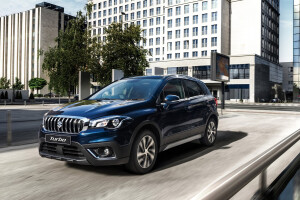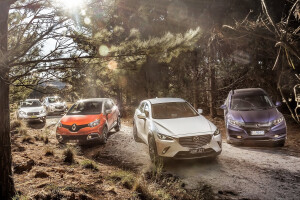Latest Review

2023 Suzuki S-Cross review: Australian first drive
Suzuki hopes its new flagship will win over Aussie hearts, but is the 2023 S-Cross good enough?
The Suzuki S-Cross is back and ready to take on the small SUV segment’s dominant players – or so its maker hopes.
With facelifted looks, new tech and more safety features for MY23, the latest S-Cross is certainly an improvement, but has enough changed for it to really set the cat among the pigeons?
Playing alongside its Vitara sibling in the same segment, the S-Cross needs to set itself apart in a way that offers fought-over buyers something they just can’t get for their cash elsewhere.
With Suzuki setting its sights on the likes of the Nissan Qashqai, Mitsubishi ASX and Kia Seltos, we find out if the new S-Cross is giving us enough for our buck.
The basics
Pricing and features
For 2023, there are two grades of the S-Cross – the Allgrip and Allgrip prestige, renamed from the previous line-up that consisted of the Turbo and Turbo Prestige.
Both grades are available with the same 1.4-litre turbo-petrol engine already found in the Vitara Turbo, and both are all-wheel drive.
The base Allgrip costs $40,490 while the higher-spec Allgrip Prestige costs $44,490 (both before on-road costs). Premium paint is available for all variants, which adds $695.
By comparison, similar levels of kit are available in lower-spec Qashqais (also new this year), with more on offer as you go up the grades for less than $40K and the option of hybrid power.
Equally, despite its age, the ASX offers similar features for less than $40K, even in top-spec guise – although admittedly without AWD or hybrid power. And even the top-grade Kia Seltos GT-Line comes in at less on the road – closer to $45K than $50K.
While the drivetrain remains mostly carryover from the previous-generation S-Cross that launched here in 2017, the differences in tech and safety are what distinguish the 2023 model from its predecessor.
There are a few obvious aesthetic enhancements to be found on the new S-Cross too, including a sleeker bonnet, piano-black diamond lattice grille and redesigned LED headlights to portray a ‘higher centre of gravity’ – coupled with squared-off wheel arches and silver garnishes on the bumpers for a bolder look.
Inside there is a lot that’s fresh too – though still plenty of familiar components shared with the last model and across the wider Suzuki range.
Inside there is a lot that’s fresh too – though still plenty of familiar components shared with the last model and across the wider Suzuki range.
Front and centre for the changes is a larger 9.0-inch infotainment screen, featuring Suzuki’s next-generation system (though it’s limited to the Prestige only – the base Allgrip makes do with a 7.0-inch unit).
In our short time with the car, we found said system to be a little convoluted compared to before. All the main features you’d expect to be there were, but they were slightly more awkward to find – undoubtedly something you would get used to over time as an owner.
Android Auto is standard (albeit wired) and, for the first time in a Suzuki, wireless Apple CarPlay is there too. As before, the S-Cross comes with built-in satellite navigation and a USB-A port for wired smartphone connectivity. Another first is the inclusion of digital radio.
2023 Suzuki S-Cross safety features
The new S-Cross also gains a boosted list of safety features for MY23, now comprising seven airbags, adaptive cruise control, autonomous emergency braking (AEB), lane departure warning, weaving alert, blind-spot monitoring, rear cross-traffic alert and front and rear parking sensors.
Stepping up to the Allgrip Prestige gains polished alloy wheels, a 360-degree camera system (up from just a reversing camera on the Allgrip), leather-accented seats and a panoramic sunroof as standard.
ANCAP has not yet tested the new S-Cross. Its predecessor got a five-star rating dating back to 2013, so it was tested under very different criteria to today’s stricter standards.
Comfort and space
Both the Allgrip and Allgrip Prestige offer a comfortable and smart-looking cabin, likely to appeal to families looking for a few more creature comforts in their daily driver, but without the budget to expand into the more premium vehicle space.
While at first glance much looks familiar in terms of the materials used and layout of the cockpit – touchpoints like the steering wheel, armrest, buttons, cup holders and gearstick bearing striking resemblance to other Suzukis on offer – some new additions lift the S-Cross’s game to provide a more refined space.
The door panels now feature soft-touch materials and less hard plastic. The seats are also upholstered with a nicer quality of cloth in the entry-level version and are leather-accented in the range-topper.
All seats, even the driver’s, remain manually adjustable – but both grades gain heating functionality (with a low and high function) for the front pair, which is a welcome perk on cold winter mornings.
The second row can also be moved to create more space, however, there are no added convenience features for rear occupants to be found, which is a shame. The S-Cross gets one map pocket on the front passenger’s seatback, and when folded down, the middle seat becomes an armrest complete with two cup holders.
But that’s it. No air vents, USB ports or extra space in the doors above and beyond the slots that can hold a regular-sized drinks bottle.
It could also do with a little more rear passenger legroom, as well as more places to put toys and the like, to make it a really competitive family car. Though it’s wider and longer than its Vitara sibling on paper, in practice it doesn’t actually equate to a feeling of more room inside.
Boot capacity fares much better at a very respectable 440 litres, one of the best in its segment, and with the seats down that’s increased to 1230L. It also has handy cubby holes on either side of the boot floor for putting small bits and pieces such as electric pumps or first aid kits.
Rounding out the family functionality are two ISOFIX anchor points on the outer seats and three top tether hooks. Not hidden away or covered up by unnecessarily faffy plastic covers, the ISOFIX anchors are easy to access and connect, as are the top tether points, which are a doddle to reach on the back of the seats from the boot.
Though it’s wider and longer than its Vitara sibling on paper, in practice it doesn’t actually equate to a feeling of more room or practicality inside.
On the road
Each trim grade is available with the familiar 1.4-litre four-cylinder turbo-petrol, identical to the unit found in the previous model and Vitara Turbo. All-wheel drive is standard regardless of spec, teamed with a six-speed torque converter automatic transmission.
Power and torque are rated at 103kW and 220Nm respectively.
Although there’s nothing new to write home about here, the tried and tested turbo continues to pack a healthy punch when asked, offering quick off-the-mark acceleration thanks to its light 1300kg mass and a more attractive, throatier sound than its 1.6-litre naturally-aspirated cousin of yesteryear (which is still available in the naturally-aspirated Vitara).
Power is available when needed, aside from a very slight reluctance from either standstill or at low speeds. Other than that, the transmission responds well and suits the engine nicely. Braking too is solid and dependable, with no need to apply too much pressure, and a confidence-inspiring pedal feel.
Retaining the same chassis as before, another commonality with the Vitara, its ride remains a little bumpy. While it’s comfortable enough on flat bitumen, find a pothole or uneven road and you’ll start to hear and feel the bangs.
There are two driving modes beyond normal: Sport and Snow (for soft-roading). The former is a little thirstier as a trade-off for sharpening up the throttle response and gear changes.
What it does offer is plenty of traction and good grip, even riding on Continental eco tyres, holding its own on sealed and unsealed roads alike. Road and tyre noise are the sacrifice, however, as the din permeates the cabin a little too easily for our liking.
Perhaps its biggest flaw is the steering, which is overly light and disconnected. Though light steering is a typical Suzuki trait, in the S-Cross it feels floaty. It also requires a good half a turn just to pull out of a junction, which is more effort than expected.
There’s a significant dead spot as well – great if you’re pretending to drive a car in a movie as an actor, not so great when you’re after quick and responsive movements to get the car where you need it to go.
Although Suzuki Australia’s line-up continues to miss out on hybrid variants found overseas, the S-Cross’s claimed fuel-economy rating of 6.2L/100km is respectably low. We'll confirm something closer to real-world figures when we get the S-Cross through the Wheels Media garage.
Ownership
Suzuki Australia offers a five-year, unlimited-kilometre warranty, five years of roadside assistance and a five-year capped-price servicing regime at intervals of 12 months or 10,000km.
Pricing for servicing in years one, three and five is $239, with the second service costing $329 and the fourth $429.
VERDICT
With the 2023 S-Cross, Suzuki has made some worthwhile and noticeable improvements for customers after a family SUV that offers decent driving performance, space and creature comforts that make their daily commute or school run that bit more enjoyable.
But it disappoints in terms of price. Charging $40K for the base and $45K for the range-topper – before on-road costs – seems a lot to ask for a budget brand when competitors offer more for the same or less money.
While the new S-Cross would indisputably make a good daily driver for a family of three or four – or an older person in need of a bit of space and higher ride – the extra kit, jazzed-up looks and improved cabin materials just aren’t a step far forward enough to warrant that much more coin in our view. Especially when the turbocharged Vitara with Allgrip all-wheel drive (once again, using the same powertrain) is going for $42,990 drive-away.
Previously, the Vitara has outsold the S-Cross by a healthy margin, so it’ll be interesting to see what switching flagships does for Suzuki – and if buyers are willing to pay the difference for a few frills on an otherwise familiar offering.
2023 Suzuki S-Cross specifications
Score breakdown
Things we like
- Perky engine
- More distinguished looks
- All-wheel drive as standard
Not so much
- Ambitious price
- Light steering
- No hybrid option for Australia
News
-
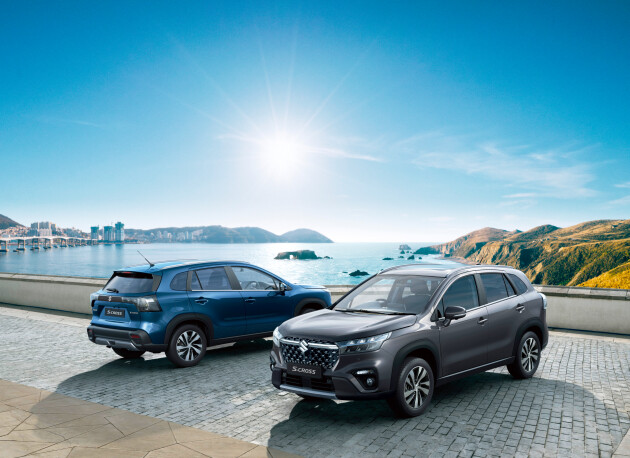 News
News2023 Suzuki S-Cross Australian pricing and features
S-Cross takes over top spot as flagship of the range from the Vitara
-
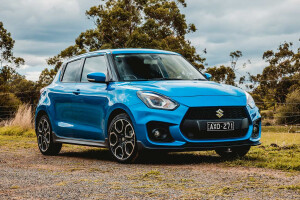 News
News2016-2022 Suzuki Swift, S-Cross, Baleno and Vitara recalled
More than 20,000 vehicles across Australia are affected by the manufacturing defect
-
 News
News2022 Suzuki S-Cross revealed, Australia confirmed
The facelifted S-Cross has debuted in Europe with a fresh new look and mild-hybrid power
-
 News
News2022 Suzuki S-Cross leaks ahead of unveiling – UPDATE
The third-gen S-Cross is set to make its debut later this month, according to Suzuki Spain’s boss
-

Suzuki Swift Sport inbound with 1.4 turbo and manual gearbox
-
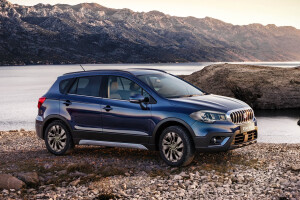
2017 Suzuki S-Cross Turbo heralds big changes for small SUV
-
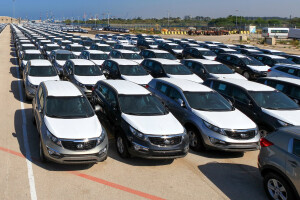
Revealed: Where your new car comes from
-
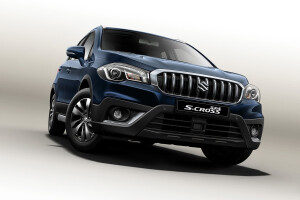
2017 Suzuki S-Cross facelift revealed ahead of Paris Motor Show debut




